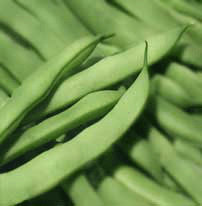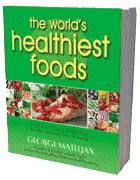Spices Are Gaining Attention and Making Important Nutritional Contributions to U.S. Diets
Along with fresh vegetables, spices are one of the best examples we have of nutrient-rich foods. These foods provide us with a negligible amount of calories, while providing us with a surprising variety of nutrients.
While traditional cuisines around the world depend on spices for their unique flavors and aromas, the nutritional value of these foods is often overlooked. The Center for Nutrition Policy and Promotion at the U.S. Department of Agriculture (USDA) recently released its 2008 report on spices in the U.S. food supply and reported some encouraging trends with respect to spices in the U.S. diet. Over the past 10 years (1995-2005), the USDA found a 41% increase in the amount of spices made available to U.S. consumers, and a gradual but steady increase in spice sales that's approaching the $3 billion level. Over two dozen different spices were found to be prevalent in the U.S. food supply (and the vast majority of these spices are the ones you'll find profiled on our website).
Among the vitamins contributed to the U.S. food supply by spices, carotenoids ranked highest. Vitamin C and vitamin B6 were also worthy of special mention here. Among minerals, the contribution of spices ranked highest for iron. Calcium, magnesium, copper, and potassium were also included as minerals provided more frequently by spices in the U.S. food supply.
Since spices are typically consumed in small amounts, they may not always make a large contribution to our nutrient needs. But it would be very wrong to think about spices as nutritionally irrelevant. You'll get about 38% of the Daily Value (DV) for manganese from 2 teaspoons of ground cinnamon. The same amount of oregano will give you about 23% of your daily vitamin K. Two tablespoons of parsley can provide you with approximately 12% of the DV for vitamin C.
We're glad to see these upward trends in spice availability and purchasing in the U.S. and encourage you to make generous use of spices in your everyday diet. Based on this USDA report, it would make particularly good sense to turn to spices for special help with carotenoid intake. The benefits of carotenoids are well established, especially in the area of antioxidant nutrient support and lessening some of the damage caused by smoking.
Reference
Center for Nutrition Policy and Promotion, United States Department of Agriculture. Availability of Spices on the Rise in the U.S. Food Supply. Nutrition Insight 2008, Issue 39 (March). published online at: http://www.cnpp.usda.gov/Publications/NutritionInsights/Insight39.pdf.






